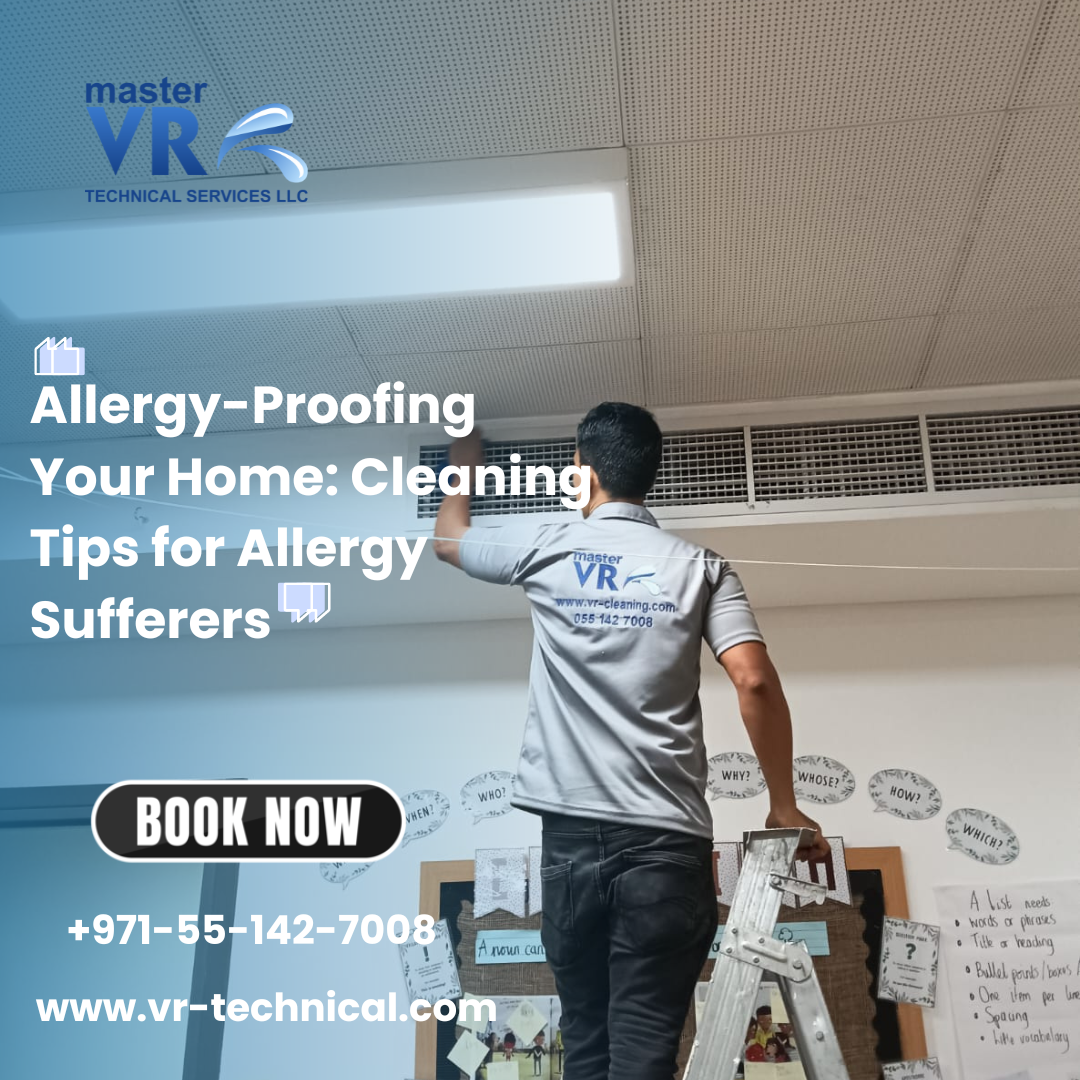
Allergy sufferers, maintaining a clean and allergen-free home is essential to reduce symptoms like sneezing, itchy eyes, and congestion. Everyday irritants, from dust mites to pet dander, can easily accumulate in a home, causing discomfort and triggering allergic reactions. While it’s impossible to eliminate all allergens, with thoughtful cleaning practices and regular upkeep, you can make your home a more comfortable and allergy-friendly space. Here’s a guide on effective strategies to allergy-proof your home.
1. Focus on Dust-Free Surfaces
Dust mites are one of the most common indoor allergens, and they thrive in dusty environments. To keep surfaces dust-free:
- Use a Microfiber Cloth: Microfiber traps dust more effectively than regular cloths, reducing the chance of stirring up particles.
- Declutter Regularly: Keep surfaces clear of knick-knacks and decorative items that collect dust.
- Clean High-Touch Areas: Frequently clean door handles, light switches, and remote controls to prevent allergen buildup.
- Limit Upholstered Furniture: Upholstered items can trap allergens, so opt for leather or wood furniture when possible, as they are easier to wipe down.
2. Choose Hypoallergenic Bedding
Allergens often settle in mattresses, pillows, and bedding, making these areas a hotspot for dust mites and dander. To allergy-proof your bedroom:
- Use Allergen-Proof Covers: Invest in hypoallergenic, dust-mite-proof covers for pillows, mattresses, and box springs.
- Wash Bedding Weekly: Wash your sheets, pillowcases, and blankets in hot water (130°F) every week to kill dust mites.
- Avoid Feather or Down Bedding: These materials can trap allergens; instead, choose hypoallergenic pillows and comforters.
- Vacuum Your Mattress: Regularly Cleaning your mattress to remove dust mites and other allergens.
3. Vacuum with a HEPA Filter
Standard vacuums can stir up allergens instead of capturing them, but vacuums equipped with High-Efficiency Particulate Air (HEPA) filters are designed to trap small particles:
- Vacuum Weekly: Aim to vacuum at least once a week, paying special attention to high-traffic areas and rugs.
- Use HEPA Filter Bags: HEPA filters capture 99.97% of particles, including dust, pollen, and pet dander, which can help keep the air clean.
- Vacuum Upholstery: Don’t forget couches, chairs, and other fabric surfaces, which can accumulate allergens over time.
4. Reduce Pet Allergens
For those with pet allergies, dander (small flakes of skin) can be a major irritant. Here are ways to manage pet allergens in your home:
- Keep Pets Off Furniture: Designate pet-free zones, especially bedrooms, to keep dander levels low.
- Bathe and Groom Pets Regularly: Regular baths and brushing can reduce shedding and dander. Consider using grooming wipes for sensitive pets.
- Use an Air Purifier: Place HEPA air purifiers in rooms where pets spend time to capture airborne pet dander.
- Wash Pet Bedding Frequently: Clean their bedding and toys often to reduce the buildup of dander and allergens.
5. Control Humidity Levels
High humidity encourages the growth of mold, mildew, and dust mites, which thrive in moist environments. To keep indoor humidity in check:
- Use a Dehumidifier: Aim to maintain indoor humidity levels between 30-50%. Dehumidifiers can help prevent mold and dust mites from flourishing.
- Ventilate Bathrooms: Install a fan or open a window when showering to prevent mold growth.
- Fix Leaks Promptly: Leaks can create moist environments where mold can thrive. Repair any plumbing issues as soon as possible.
- Clean and Inspect AC Filters: HVAC filters trap dust, pollen, and other allergens, so change them every three months to improve air quality.
6. Target Mold Hotspots
Mold spores are common allergens that can grow on damp surfaces, especially in bathrooms, kitchens, and basements. To keep mold at bay:
- Clean Showers and Tiles: Regularly scrub bathroom tiles, grout, and shower curtains with mold-killing cleaners.
- Use Mold-Resistant Paint: In areas prone to dampness, such as bathrooms and basements, consider using mold-resistant paint.
- Remove Standing Water: Make sure there is no standing water in sinks or tubs after use to avoid moisture buildup.
- Wash Shower Curtains and Bath Mats: Regularly wash these items in hot water to eliminate mold growth.
7. Air Purifiers: A Valuable Investment
An air purifier with a HEPA filter can help remove allergens like pollen, dust, and pet dander from the air. They are especially helpful in bedrooms and living areas:
- Choose HEPA Filters: HEPA air purifiers are designed to capture particles as small as 0.3 microns.
- Run Purifiers Continuously: For best results, keep the purifier running continuously in allergy-prone rooms.
- Replace Filters Regularly: HEPA filters should be changed every six to twelve months to maintain effectiveness.
8. Wash Curtains, Blinds, and Rugs Regularly
Fabric surfaces attract allergens over time, making it essential to clean these items regularly:
- Wash Curtains Every Few Weeks: Opt for machine-washable curtains to keep dust and allergens at bay.
- Dust and Wipe Down Blinds: Use a microfiber duster to prevent dust accumulation.
- Clean Rugs and Carpets: Use a vacuum with a HEPA filter on carpets, and consider washing smaller rugs in hot water.
9. Avoid Strong Fragrances and Chemicals
Many cleaning products and air fresheners contain chemicals and fragrances that can trigger allergies and asthma. For an allergy-proof home:
- Use Green Cleaning Products: Eco-friendly, fragrance-free products reduce chemical exposure.
- Avoid Aerosol Sprays: Aerosols can release airborne particles that trigger allergies; consider pump sprays or concentrates instead.
- Make DIY Cleaners: A mix of vinegar, baking soda, and water can be an effective and chemical-free cleaning solution.
10. Wash Hands and Change Clothes
Finally, allergens can enter your home on your skin, clothes, and shoes. Here’s how to reduce outdoor allergens indoors:
- Wash Hands Regularly: Especially after spending time outdoors, to prevent allergens from spreading to surfaces.
- Change Clothes: Change into clean clothes when coming home to avoid bringing in pollen and dust.
- Leave Shoes at the Door: This prevents outdoor allergens and dirt from being tracked into your home.
Conclusion
Allergy-proofing your home can be an ongoing process, but by incorporating these tips into your cleaning routine, you can create a healthier, more comfortable living environment. A regular cleaning schedule, combined with the use of HEPA filters, eco-friendly products, and moisture control, will help reduce allergen buildup and alleviate symptoms for allergy sufferers. Taking these simple steps ensures




